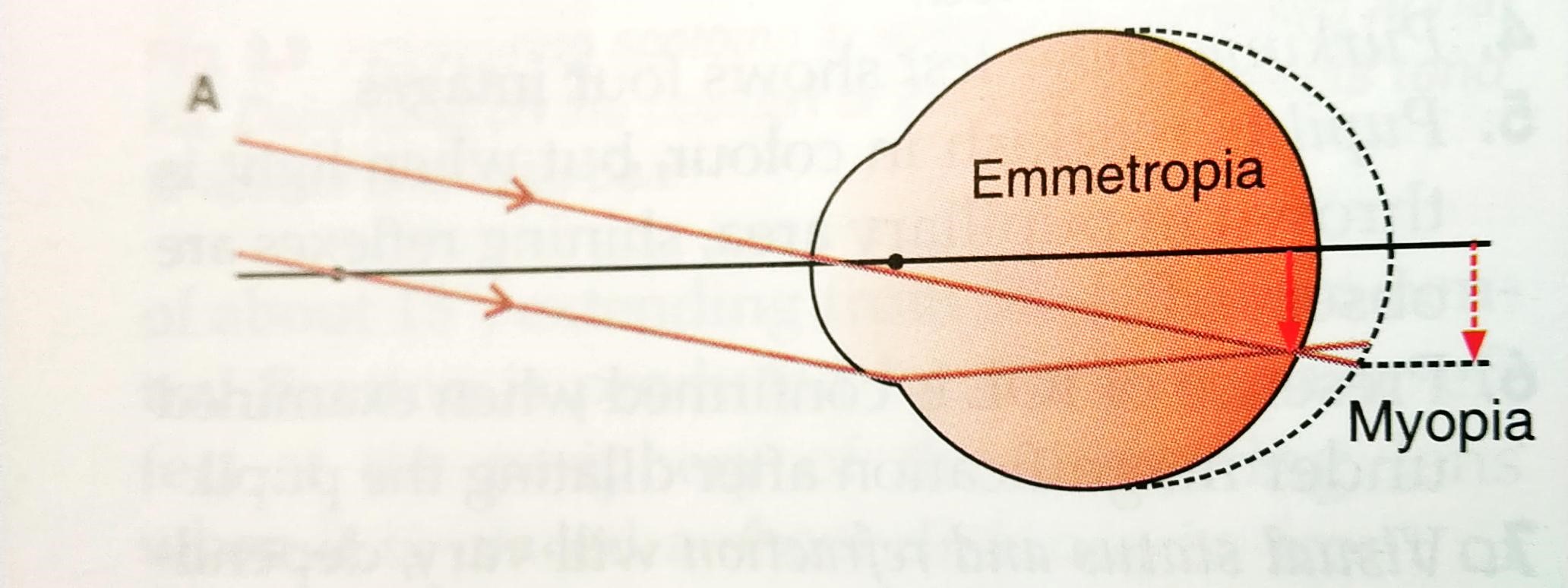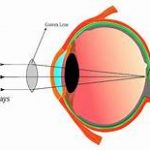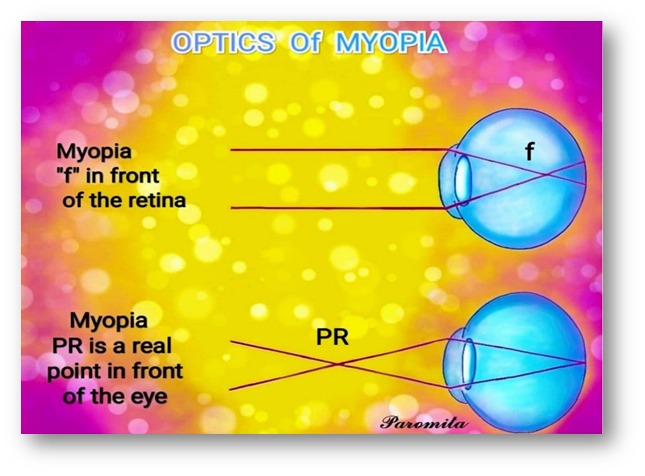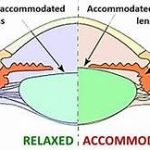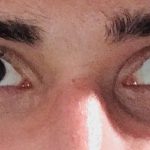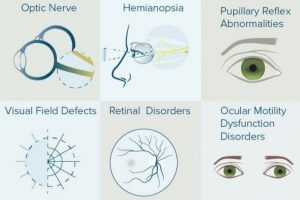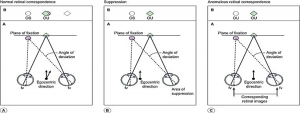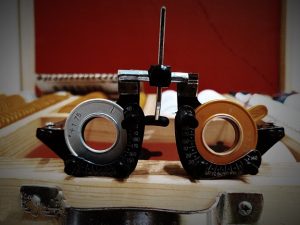Myopia
- Myopia is a Greek word Which means close the eye in other hands myopia means I shut the eye , the term was introduced from the habit of half – shutting the eye to improve distant vision. Myopia or Short Sightedness is a type of refractive error in which parallel rays of light coming from infinity are focused in front of the retina , when accommodation is at rest.
- Nearsightedness (myopia)is a common vision in which we can see objects near to us clearly, but objects farther away are blurry.
AETIOLOGICAL TYPES
Aetiologically, myopia may be of following types;
1.Axial myopia :- It is the commonest form. Axial Myopia results from increase in antero- posterior length of the eye ball. It is defined as an axial length above the norm and too long for the refractive power of the whole optical system of the eye. High myopia, has become one of the major causes of visual field defects, visual impairment, and blindness.
2.Curvatural myopia :- Curvatural Myopia occurs due to increased curvature of the cornea, lens or both.
It is a condition where corneal curvature is increased than normal(i.e. radius of curvature is decreased),as a result, refractive power of cornea increases and light rays meet,infront of retina.
3.Positional myopia :-Positional Myopia is produced by anterior placement of crystalline lens in the eye.
It is a condition where,the lens is abnormally placed in front of its normal location, as a result the focal point is found in front of the retina.
4.Index myopia :- Index Myopia occurs from increase in the refractive index of crystalline lens associated with nuclear sclerosis.
It happens in old age(associated with cataract),when the refractive index of lens increases,resulting in increased power of lens, so that light rays meet infront of fovea.
- Pseudomyopia :- Pseudomyopia also known as Artificial Myopia , it may be produced in conditions such as excessive accommodation and spasm of accommodation . Pseudomyopia or Artificial myopia also develops after full hyperopic correction in children .
CLINICAL TYPES OF MYOPIA
a)Congenital myopia:- Congential Myopia is usually associated with an increase in axial length and globe. It is seen more frequently in children who were born prematurity or with various birth defects such as marfan syndromes or homocystinuria. In Congenital myopia may be associated with converegent squint and other congenital anomalies such as cataract, microphthalmos , aniridia , megalocornea and congenital separation of retina. Congenital myopia is usually diagnosed by the age of 2-3 years. In Congenital myopia usually the error is about 8-10 D myopia . Most of the time congenital myopia is unilateral and it is rarely bilateral.
- Diagnosis :- It is frequently discovered either by routine screening examination or strabismus develops because of the associated amblyopia
- If the myopia is bilateral , the child will generated display some noticeable difficulty in seeing distant object
- Treatment – The full cyclopegic correction including any astigmatic correction should be described.
- B) Simple , developmental or physiological myopia :- This type of myopia considered as a physiological error not associated with any disease of the eye. This occurs at school going age that between 8-12 years of age , so it is called school myopia .It can be corrected upto -5to -6 D lens.
- Clinical features :- Poor vision for distance, Asthenopic symptoms such as headache ,pain in eye , vomiting , nausea etc.half shutting of the eye, prominent eye ball, deep anterior chamber, large pupil, Early temporal myopia cresent is seen in fundus.
- C) Pathological, degenerative or progressive myopia :- This myopia is a rapidly progressive error which starts in childhood at 5-10 years of age , and it results in high myopia , which can be -15-20 D lens . In early adult life this type of myopia is usually associated with degenerative changes of the eye.
- Clinical Features :- defective visison ( cannot clearly see in distant objects), Muscae Volitantes and black opacities in front of eye are uaually seen some patients , night blindness , Cornea is large, deep anterior chamber, pupils are slightly large , large and pale optic disc , temporal myopic cresent seen.
d)Acquired myopia:
Myopia, according to the lenticular theory, is acquired through adaptive change in the refractive power of crystalline lens caused by continued accommodation to near work. Some of the acquired myopia are as follows-
- Night Myopia :- Night Myopia is a tendency for eyes to become near sighted in dim illumination. Astronomers were the first discovered this phenomenon as a need for correcting lenses of negative power to improve viewing of the stars. Night myopia is a correctable cause of cause of decreased visual acuity under conditions of decreased illumination. Even people can see 6/6 may have same problem. The shift from scotopic or photopic vision at twilight is associated with increased sensitivitiy to the shorter wavelength of light. The emmetropic eye , if accommodated for the middle range of spectrum , will be slightly myopic for the shorter wavelength.
- Drug Induced Myopia :- Drug Induced Myopia is a myopia induced by a drug as a transient side effect. Some case reports of transient drug induced myopia such as secondary angle closure glaucoma, chlorodial detachment , maculopathy, retinal folds. Drug known to produce this effect include sulfa drugs, steroids , cholinergic drugand their medications. Drug may induce refractive power of the eye by three mechanisms 1)Substained contraction of the ciliary muscle , causing increased refractivity of the lens
2) Increases refractive power of the lens contents as the result of water imbibition and 3) Swelling of the ciliary processes, causing forward displacement of the lens . Increased refractive power of the lens or sustained accommodation increased myopia.
Depending upon the age of onset following terms are in a vogue:
- Congenital myopia present since birth.
- Youth-onset myopia usually occurs under the age of 20 years(simple myopia).
- Early adult -onset myopia develops between 20-40 years of age (acquired index myopia due to early nuclear sclerosis).
- Late adults -onset myopia occurs at more than 40 years of age ( acquired index myopia due to age related nuclear sclerosis).
Associations:
Congenital myopia may be associated with congenital convergent squint and other congenital anomalies such as cataract, microphthalmos, aniridia, megalocornea and congenital separation of retina.

